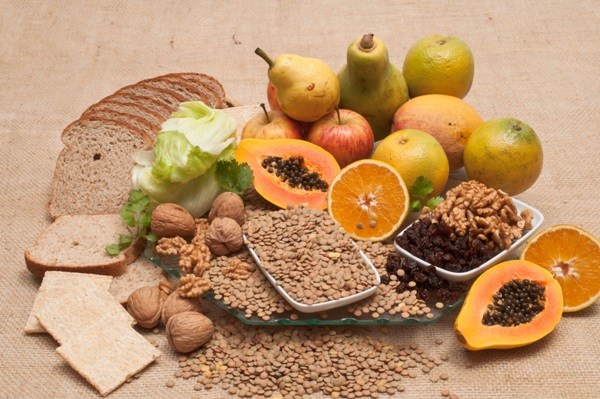
Healthy Diet and Why Fibre is a Game- Changer
In light of a new meta- analyses carried out by the University of Otago in New Zealand into the benefits of fibre in our diet, John Cummings, professor of experimental gastroenterology at the University of Dundee has been quoted “The evidence is now overwhelming, and this is a game-changer that people have to start doing something about.”
Why fibre is good for us
Fibre has been shown to naturally reduce heart attacks and strokes and also protect against life long illness such as type 2 diabetes. It helps to keep cholesterol, weight and blood pressure down. Best of all it is cheap and readily available in a supermarket near you.
So how much do you need?
Professor Cummings team at Dundee University recommend that we eat 30 grams of fibre per day. Most of us need to increase our daily fibre intake as the average is 17 grams for women and 21 grams for men. Not a lot really and it can have such a large impact on health and wellbeing.
Where can you find fibre?
Fibre is present in fruit and vegetables, oat flakes and some breakfast cereals. It is also found in wholegrain pasta and bread, pulses like chickpeas, lentils and beans as well as in nuts and seeds.
Is it easy to include 30 grams of fibre in my diet?
It does take a bit of effort and discipline. Elaine Rush, a professor of nutrition at Auckland University of Technology, provides the following example for getting up to 25-30 grams of fibre a day.
Half a cup of rolled oats – 9g fibre, two Weetabix – 3g fibre, a thick slice of brown bread – 2g fibre, a cup of cooked lentils – 4g fibre, a potato cooked with the skin on – 2g fibre, half a cup of chard – 1g fibre, a carrot – 3g fibre, an apple with the skin on – 4g fibre.

Source of fibre
What are the benefits?
A meta-analyses of 158 studies and 58 clinical trials was recently published in the Lancet medical journal claiming that if you took 1,00 people who were not getting enough fibre and gave them a diet that included 25- 30 grams of fibre a day over 2 decades, you would prevent 13 deaths and six cases of heart disease. The study also found less incidents of bowel cancer, type 2 diabetes and lower cholesterol and blood pressure levels.
What does fibre do?
It was previously thought that fibre didn’t really do much and just passed through our body. Now research has shown that fibre is essential in feeding some of the millions of bacteria that live in our intestine. These bacteria ferment the fibre to create lots of interesting and helpful chemicals such as short- chained fatty acids which are then absorbed throughout the body.
Why is this a thing?
While it no real surprise that fruit and vegetables are good for us, there is some reason for concern due the popularity of low carb diets, which reduce the amount of bread and pasta.
In conclusion
The UK’s National Health Service page is full of great tips to boost your daily fibre intake.
Including
- Choose a higher-fibre breakfast cereal such as plain wholewheat biscuits (like Weetabix) or plain shredded whole grain (like Shredded wheat), or porridge as oats are also a good source of fibre.
- Go for wholemeal or granary breads, or higher fibre white bread, and choose whole grains like whole wheat pasta, bulgur wheat or brown rice.
- Go for potatoes with their skins on, such as a baked potato or boiled new potatoes
- Add pulseslike beans, lentils or chickpeas to stews, curries and salads
- Include plenty of vegetables with meals, either as a side dish or added to sauces, stews or curries.
- Have some fresh or dried fruit, or fruit canned in natural juice for dessert. Because dried fruit is sticky, it can increase the risk of tooth decay, so it’s better if it is only eaten as part of a meal, rather than as a between-meal snack
- For snacks, try fresh fruit, vegetable sticks, rye crackers, oatcakes and unsalted nuts or seeds.
Leave a reply





Leave a reply